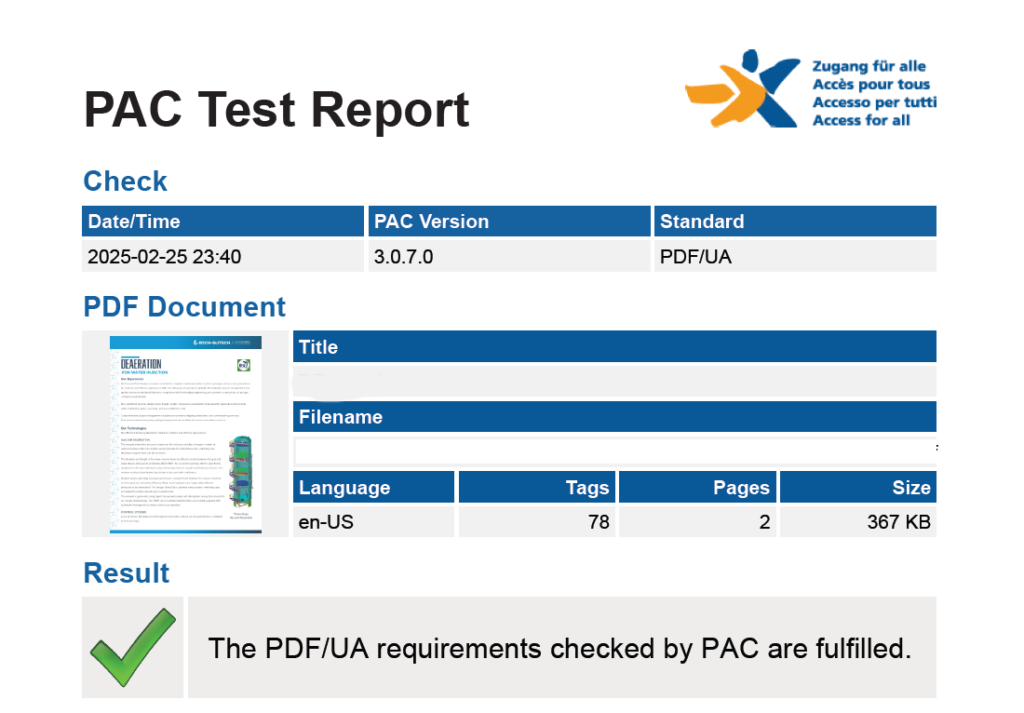6 Easy-To-Use PDF Accessibility Checkers
There is so much information available about web accessibility that we often forget that digital accessibility goes beyond just landing pages and online stores.
All too often, website owners receive demand letters even though they’ve taken steps to comply with WCAG standards, not realizing that PDFs need to be accessible too.
PDFs are not a compliance exemption – they need to meet specific ADA requirements too.
This is where a PDF accessibility checker becomes useful.
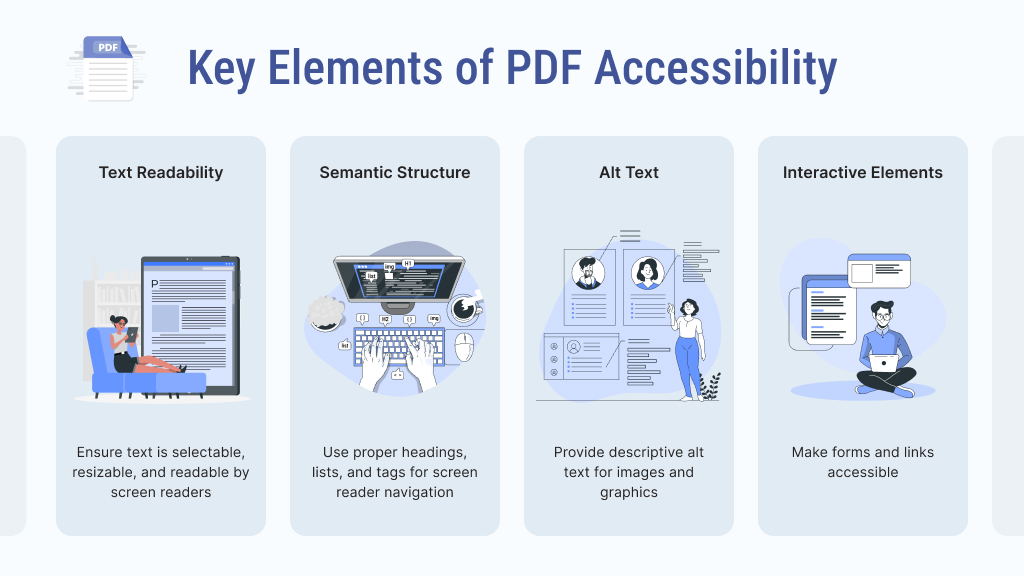
What is PDF Accessibility?
Prioritizing PDF accessibility (1) means you’re ensuring that all users can access and engage with PDF documents on your site or server, regardless of ability.
An accessible PDF is compatible with assistive technology and software, including speech recognition software, screen readers, and screen magnifiers. This way, users with visual, hearing or mobility impairments can still access the content and media in a PDF.
A good starting point to create an accessible PDF from scratch is to use an accessible source document such as Microsoft Word and convert that into a PDF format. For any existing PDFs, compliance checking is necessary.
Common PDF Accessibility Issues
So, what are some of the most common accessibility issues that are generally found within PDF documents?
- Missing or Improper Tagging. Tags define the structure of a PDF (e.g., headings, paragraphs, lists) and allow screen readers to interpret content correctly. Many PDFs lack proper tagging, making navigation difficult.
- Incorrect Reading Order. If the reading order is not properly set, screen readers may read content out of sequence, confusing users. This is especially common in multi-column layouts.
- Missing or Inadequate Alternative Text for Images. Non-text elements like images, charts, and graphics need alt text descriptions so screen readers can describe them to users who are visually impaired.
- Lack of Document Title and Metadata. A missing or generic title (e.g., “Document1.pdf”) can make it hard for users to identify the document’s purpose. Metadata also helps search engines and screen readers classify the file.
- Inaccessible Tables. Tables need proper headers and a logical reading order. Without this, screen readers may read them incorrectly.
- Insufficient Color Contrast. Poor contrast between text and background makes content hard to read for users with low vision or color blindness.
- Scanned PDFs Without OCR. Many PDFs are simply scanned images, meaning they contain no selectable text.
- Non-Descriptive Link Text. Links labeled “Click here” or “Read more” provide no context for screen reader users.
- No Form Field Labels. Interactive forms need clearly labeled fields so users relying on assistive technology understand what to enter in each box.
- Security Settings Blocking Accessibility. Some PDFs have restrictions that prevent text extraction or screen reader access, making them unusable for people with disabilities.
How to Check PDF Accessibility?
There are two ways to check PDF accessibility (2) – the first of which is using Adobe Acrobat’s built-in accessibility tool. The second is to use a third-party PDF accessibility checker.
A good online PDF accessibility checker will thoroughly check all elements, including text, tables, titles, and images. It should also provide you with a detailed report. Lastly, you want to make sure that the tool checks PDFs against the latest WCAG guidelines and standards.
Top 6 PDF Accessibility Checkers for Businesses
Here are the PDF accessibility checkers that are highly recommended for checking whether your documents meet the necessary WCAG requirements.
1. Accessibility Checker
2. PDFix Desktop Lite
PDFix has over 25 years of experience in the PDF technology space. PDFix Desktop Lite, one of their most popular solutions, helps ensure your digital documents are accessible and legally compliant. This free and easy-to-use PDF viewer and accessibility checker audits and verifies PDF documents against the latest accessibility standards. Once evaluated, it clearly outlines which area of the document requires attention.
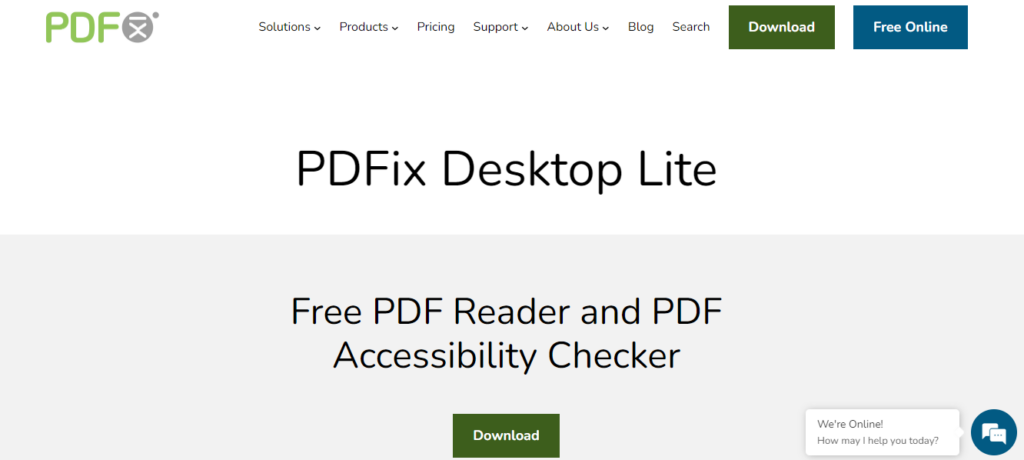
3. Adobe Acrobat Pro
Countless people and businesses currently use Adobe to view and edit PDF documents. However, Adobe Acrobat Pro DC can also be used as an accessibility tool. You can activate the PDF accessibility tool using the Tools menu and clicking on Accessibility Check / Full Check. Your PDF document will now be checked for potential issues.
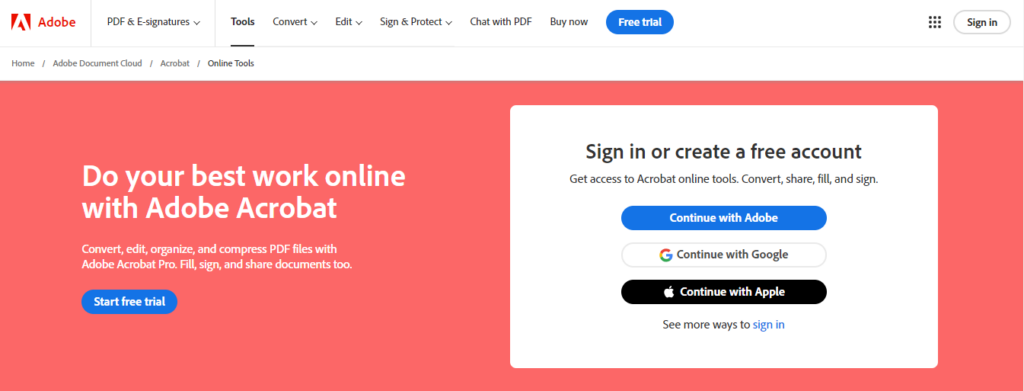
4. PREP
Continual Engine’s PREP (PDF & Document Remediation Platform) is a cutting-edge solution leading the way in document accessibility.
Powered by advanced AI, PREP transforms documents into fully accessible PDFs with remarkable speed and precision—dramatically improving productivity.
PREP’s intelligent engine automatically tags up to 90% of your content, saving you thousands of hours of manual effort.. Built to meet WCAG 2.2, PDF/UA, and Section 508 compliance standards, PREP ensures that every document you generate is accessible, inclusive, and ready to share. With its industry-first side-by-side screen reader preview, you get real-time confidence that each page meets top accessibility benchmarks. No guesswork—just consistent, reliable results.
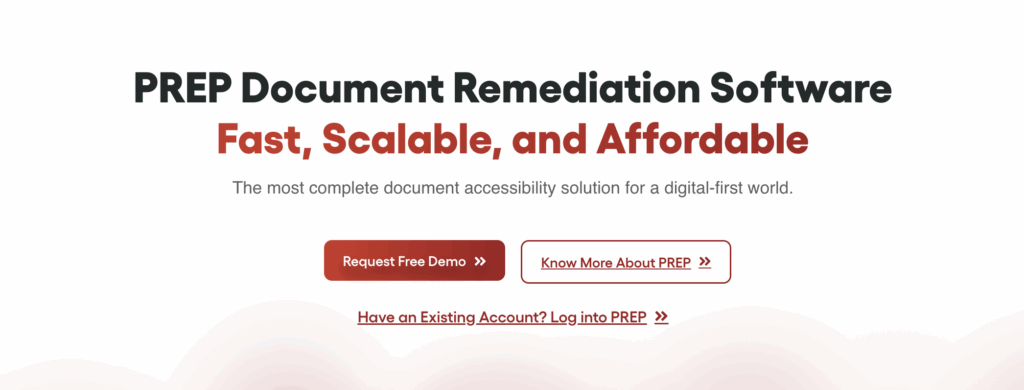
5. CommonLook PDF Validator
Created by Allyant, CommonLook PDF Validator is a professional-grade tool that checks PDFs for compliance with WCAG, PDF/UA, and Section 508. It even integrates with Adobe Acrobat for in-depth accessibility validation. You can download it for free by filling in a quick form on the Allyant website.
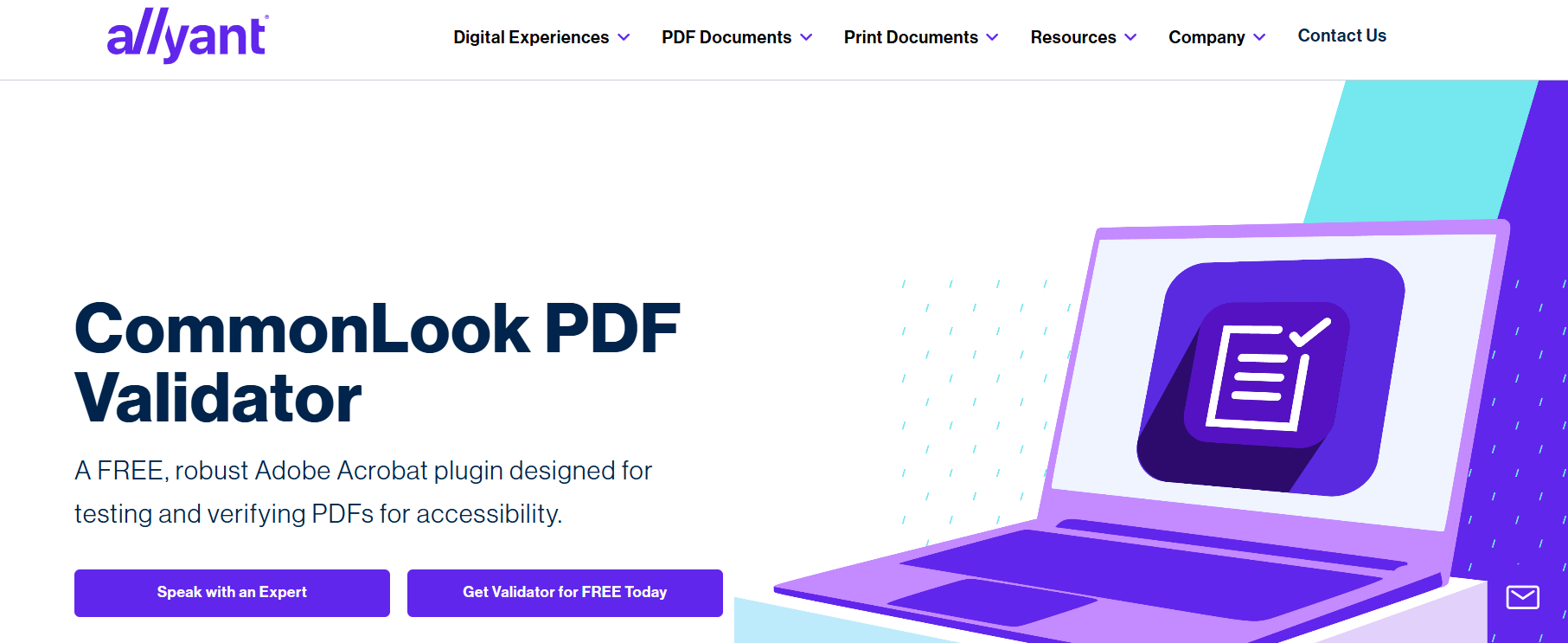
6. axesPDF
This simple but capable tool can be used to check and fix PDF accessibility issues. axesPDF verifies compliance with PDF/UA and WCAG and provides a structured report with remediation suggestions. You can download the tool to your desktop in one click and there are a number of resources available on the site should you need additional guidance.
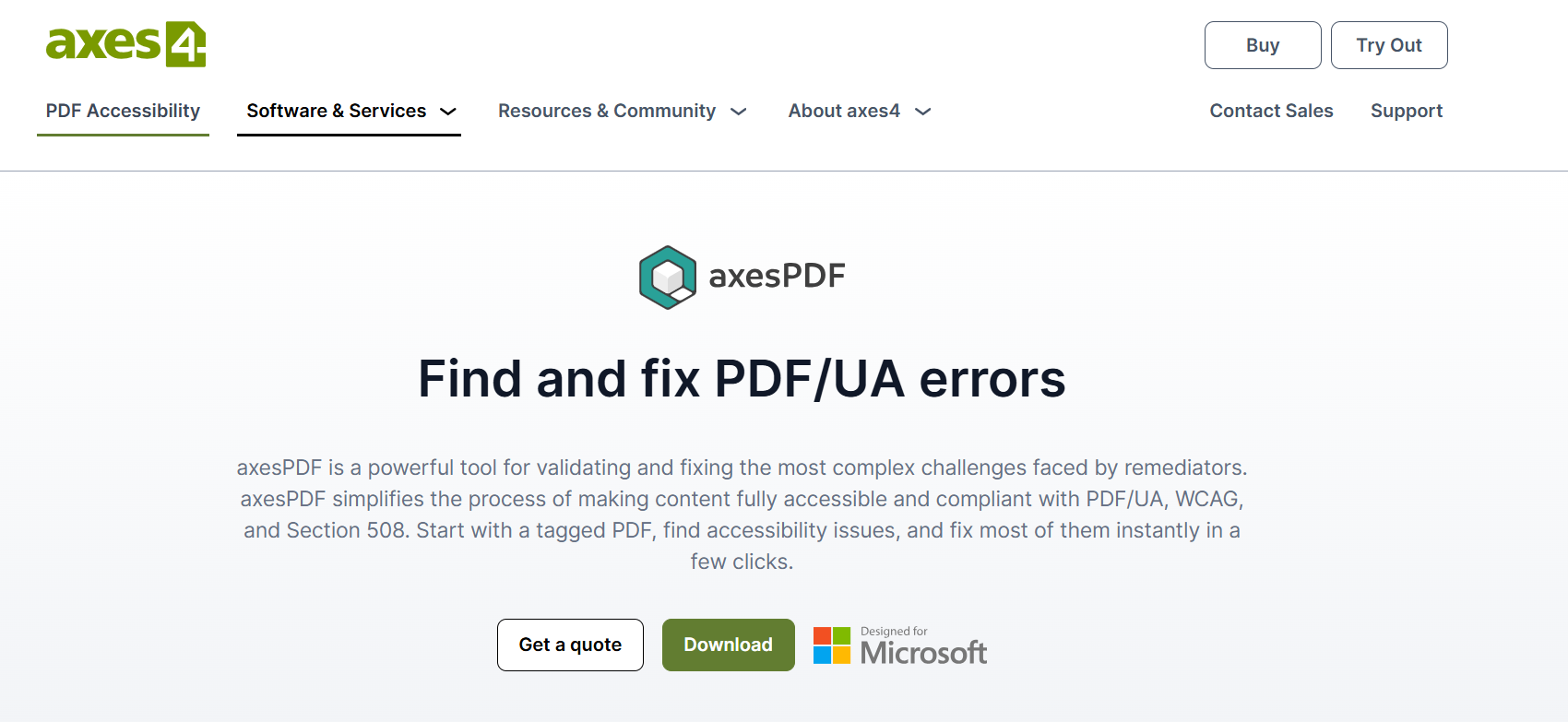
How to Remediate Your PDF Documents
To ensure your PDFs are accessible to people who rely on assistive technology, here are some steps you can take after auditing each document. Adobe Acrobat Pro DC is a great tool for remediating PDFs, so we will use it in these steps.
Use Proper Tagging
To tag a PDF correctly, you can open it in Adobe Acrobat Pro DC and use AutoTag Document (Tools > Accessibility > Autotag Document) if the document has no tags. You can also manually adjust the tagging structure using the Tags panel to ensure a logical reading order.
Add Alternative Text to Images
To add an alt tag to the images in your document, right-click an image, choose Edit Alt Text, and provide a meaningful description. Ensure that decorative images are marked as artifacts to be ignored by screen readers.
Ensure Proper Use of Headings and Lists
Headings should be structured hierarchically (H1 for titles, H2 for sections, H3 for subsections, etc.). Bulleted and numbered lists should be formatted correctly using list tags rather than manually inserted dashes or numbers.
Provide a Descriptive Document Title
Go to File > Properties > Description and add a meaningful Title (not just “Document1”). It’s also important to make sure the title appears in File > Properties > Initial View > Show Document Title instead of the filename.
Check Table Accessibility
Use properly structured table headers rather than just bold text for column names. Add scope attributes (row/column headers) to help screen readers navigate any data correctly.
Improve Color Contrast
Ensure text has at least 4.5:1 contrast ratio with the background – this is a WCAG requirement. You can use this free Color Contrast Checker to validate this fix.
Convert Scanned PDFs to Searchable Text
If the PDF is a scanned image, use Optical Character Recognition (OCR) in Acrobat (Tools > Scan & OCR > Recognize Text). Make sure the recognized text is correctly formatted and tagged.
Since not every business has access to Acrobat, though, exploring alternative OCR tools can be helpful. G2’s guide on the best free OCR software highlights accessible options that can convert scanned files into searchable, compliant documents. G2 experts note that, “Laserfiche supports digital files and automates document scanning and processing so that documents can be shared across teams.”
Make Forms Accessible
Use Acrobat’s Prepare Form tool to add clear labels and tooltips for form fields. Be sure to test forms with a screen reader to check for proper navigation.
Check Security Settings
Lastly, you want to avoid security restrictions that block screen readers. You can do this by following this path: File > Properties > Security > Ensure “Enable Text Access for Screen Reader Devices” is allowed.
Wrapping Up
Now that you know which tools you can use to check for PDF accessibility, there’s no reason why you need to worry about costly demand letters and a poor user experience.
By making your website as well as your PDFs accessible, you are ensuring your employees and customers can enjoy a more inclusive experience, which is what everyone deserves.
Find out whether your website is accessible or not by conducting a test on Accessibility Checker.
Learn More About Accessibility
Grow your web and document accessibility knowledge by reading these recommended blogs:
- Authoring Tool Accessibility Guidelines (2022)
- Where to Sign Up for PDF Accessibility Training
- The Ultimate Guide to WCAG Guidelines
FAQs
How do I view accessibility in a PDF?
There are a number of tools you can use to determine whether your PDF is accessible, but if you want to view and access existing accessible features, Adobe Acrobat Pro is one of the best platforms to use. It can also be used to remediate your documents.
What is accessibility in terms of PDF documents?
An accessible PDF is one that has an organized structure, including headings, paragraphs, and tables. It’s this structure that makes it possible for screen readers to access a document. An accessible PDF also offers context for additional elements such as images. If someone cannot see an image, a screen reader needs to be able to explain it to them.





